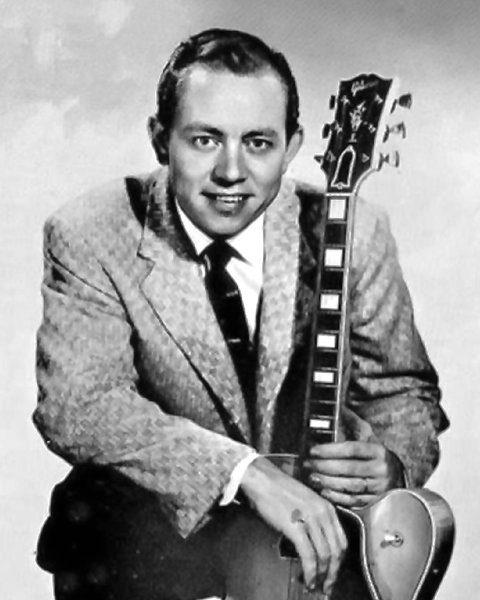
Hank Garland
1930—2004
Many people consider Chet Atkins to be the world’s greatest guitarist. But Chet himself said that title should belong to Hank Garland, whose virtuoso guitar was featured on dozens of country and rock hits in the 1940s, ’50s, and early ’60s, and whose influential solo albums blurred lines between country and jazz.
Born in 1930 and raised in Cowpens, Walter Louis "Hank" Garland was performing on local radio by age twelve. At fifteen, he was playing guitar at East Main Street’s Alexander Music House when he was discovered by the Grand Ole Opry’s Paul Howard, and in his late teens, once he was old enough to legally work as a professional, he was recognized as a top-tier Nashville session guitarist. At age nineteen, he recorded his signature hit, the dazzling "Sugarfoot Rag." And over the next decade, he became the most-recorded guitarist in Nashville. He played the stinging electric guitar on Elvis Presley’s "Little Sister," the lovely, melodic descent on Patsy Cline’s "I Fall To Pieces," the hook on Brenda Lee’s "Rockin’ Around the Christmas Tree" and many other memorable parts.
After sessions, he often played jazz music in Nashville clubs, and he wound up releasing three much-praised jazz albums, including Jazz Winds From A New Direction, a work that influenced George Benson, among others. A 1961 car accident injured Garland’s brain and ended his recording career, but not before he had made a lifetime’s worth of contributions to music.
—Peter Cooper, author, professor, award-winning journalist, and Grammy-nominated artist
Interesting Fact
In the mid ’50s, Garland influenced guitar manufacturing when he and Billy Byrd helped design what would eventually become the Gibson Byrdland hollow-body.
Sign paired with: Johnny Blowers
Listen


